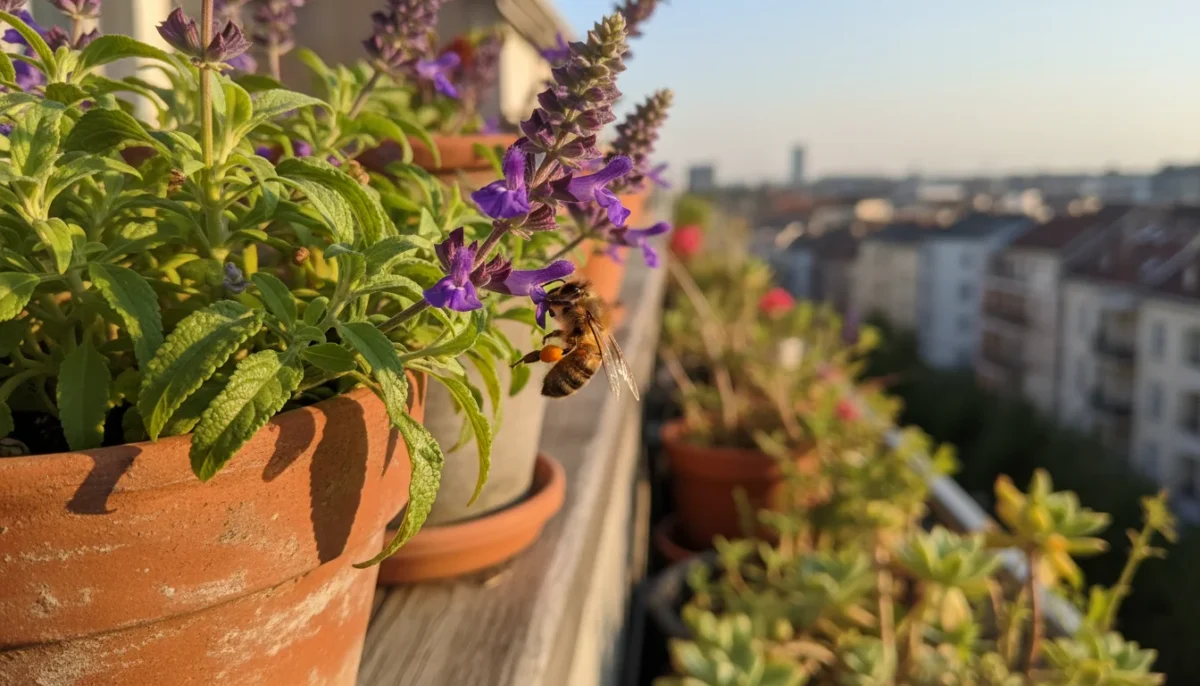Your balcony, patio, or compact yard offers a vital opportunity to support local ecosystems. Even in small spaces, you cultivate a vibrant sanctuary for pollinators, turning concrete into a buzzing, fluttering haven. This guide empowers you to select and care for pollinator plants, creating a thriving small space gardening environment that benefits bees, butterflies, and other essential garden visitors.
You play an active role in biodiversity conservation. Research indicates a significant decline in pollinator populations globally, with habitat loss and pesticide use cited as primary contributors. By dedicating your small space to pollinator-friendly plants, you provide crucial food sources and shelter, directly contributing to their survival and the health of your local environment. You do not need acres of land to make an impact. Your potted garden offers a crucial pit stop for weary travelers. This article will show you how.
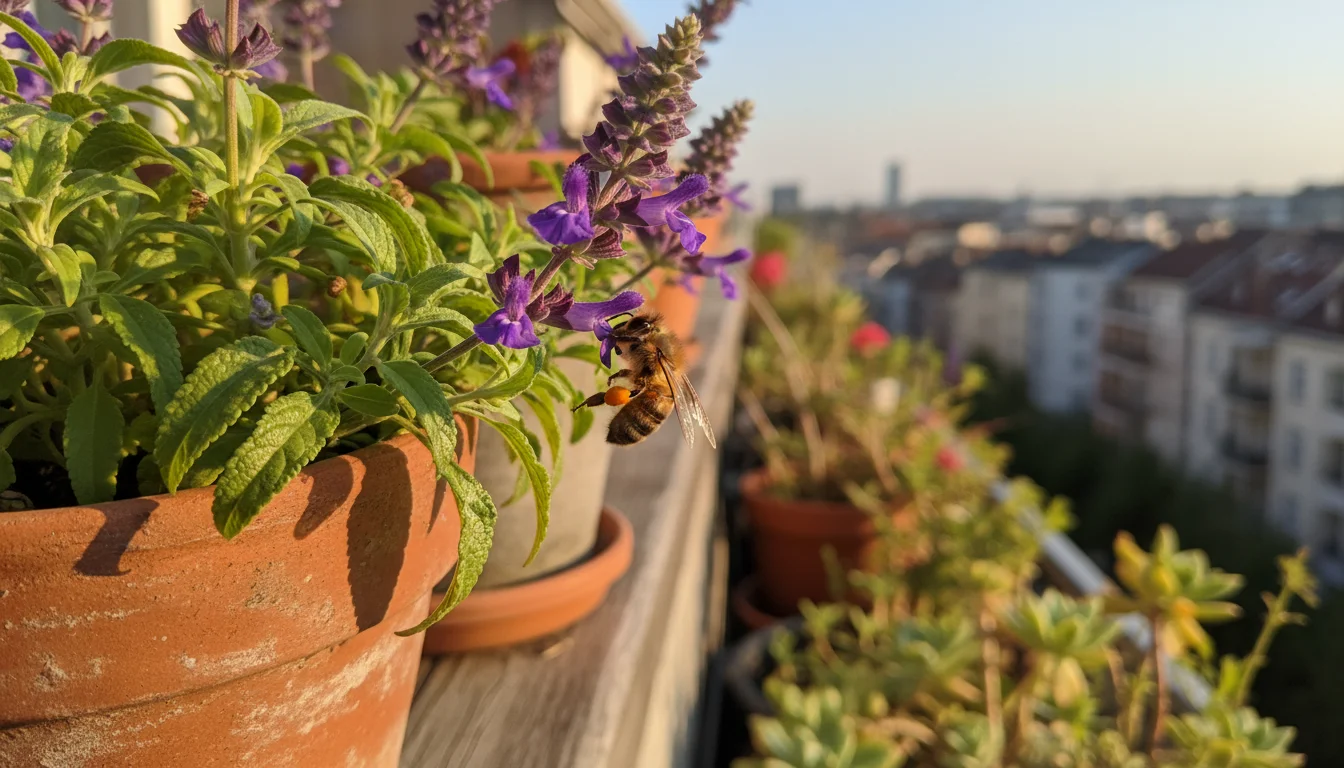
Why Pollinators Matter for Your Balcony and Patio
Pollinators, including bees, butterflies, moths, and even some birds and beetles, perform an indispensable service: they transfer pollen between plants, enabling them to reproduce. This process directly supports the production of fruits, vegetables, and seeds, forming the foundation of many ecosystems. Without pollinators, the diversity of plant life, and consequently, the animals that depend on those plants, would drastically diminish. Your small space garden, even a few potted pollinator plants, acts as a critical stepping stone, connecting larger natural areas and providing essential sustenance in urban environments.
Consider the economic impact. A 2016 study published in the journal Science estimated that animal pollinators contribute an average of $217 billion to the global economy annually, largely through their impact on agricultural yields. Beyond monetary value, their ecological value is immeasurable. They enhance biodiversity, support wildlife, and contribute to healthy soil and water systems. You provide direct support to this vital ecological function when you cultivate a pollinator-friendly space.
For individuals new to small space gardening, understanding the symbiotic relationship between plants and pollinators unlocks a deeper appreciation for the natural world. Bees, for example, exhibit floral constancy, meaning they tend to visit the same species of flowers during a single foraging trip. This efficiency makes them excellent pollinators. Butterflies, while often perceived as less efficient due to their larger size and less “hairy” bodies, still contribute significantly, particularly to plants with large, colorful blooms. By understanding these dynamics, you can select plants that specifically attract and support a diverse range of pollinators, maximizing your garden’s ecological benefit.
Furthermore, watching bees and butterflies visit your garden brings immense joy. It connects you to nature, reduces stress, and offers a tangible sense of accomplishment in contributing to environmental health. Your urban oasis becomes a vibrant educational tool, demonstrating the power of small-scale ecological action. You create a living classroom for yourself, your family, and your community.
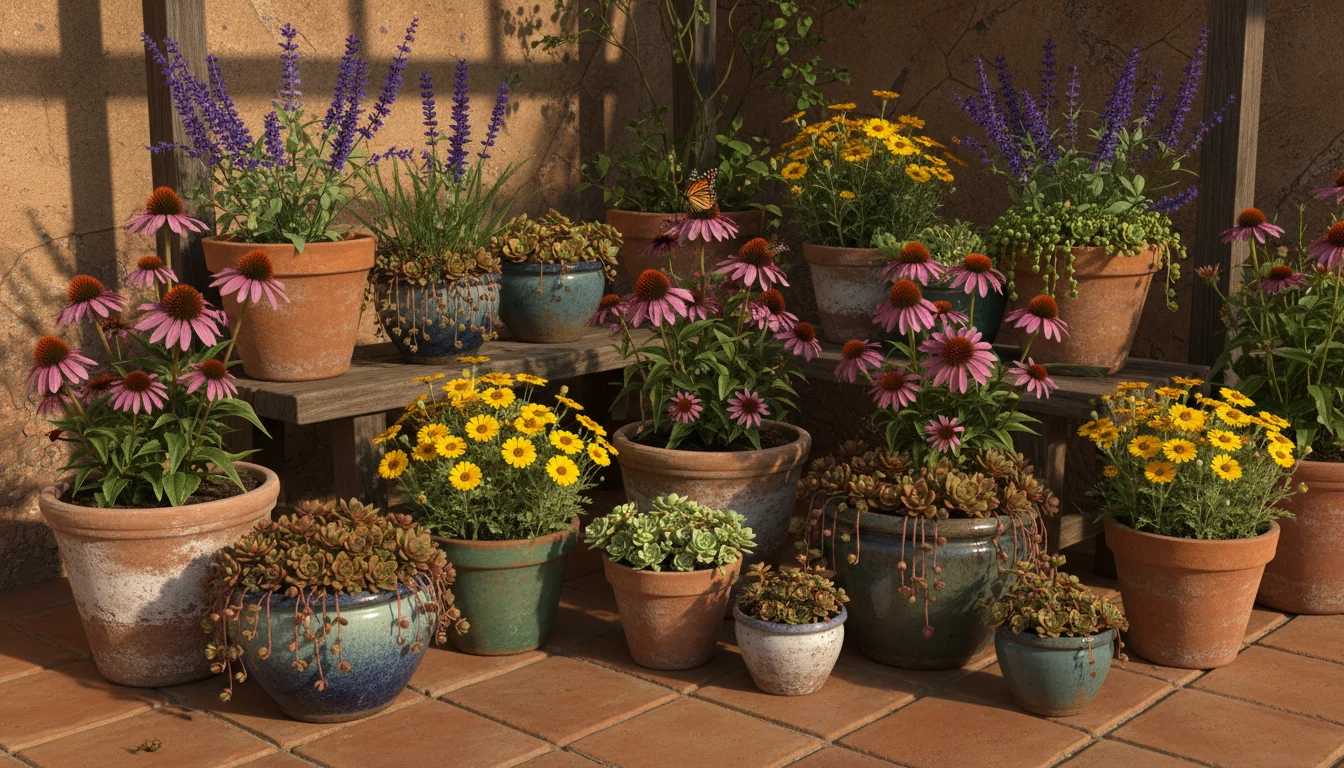
Choosing the Best Pollinator Plants for Your Small Space
Selecting the right pollinator plants for balconies and patios requires careful consideration of several factors: bloom time, flower shape, color, and your local climate. Native plants are always a superior choice as they evolved alongside local pollinators, providing precisely the nectar, pollen, and host plant needs unique to your region. They also typically require less water and maintenance once established. Consult your local agricultural extension or native plant society for specific recommendations for your area. For instance, in the Southwestern United States, desert marigold (Baileya multiradiata) attracts bees, while in the Northeast, purple coneflower (Echinacea purpurea) is a magnet for both bees and butterflies.
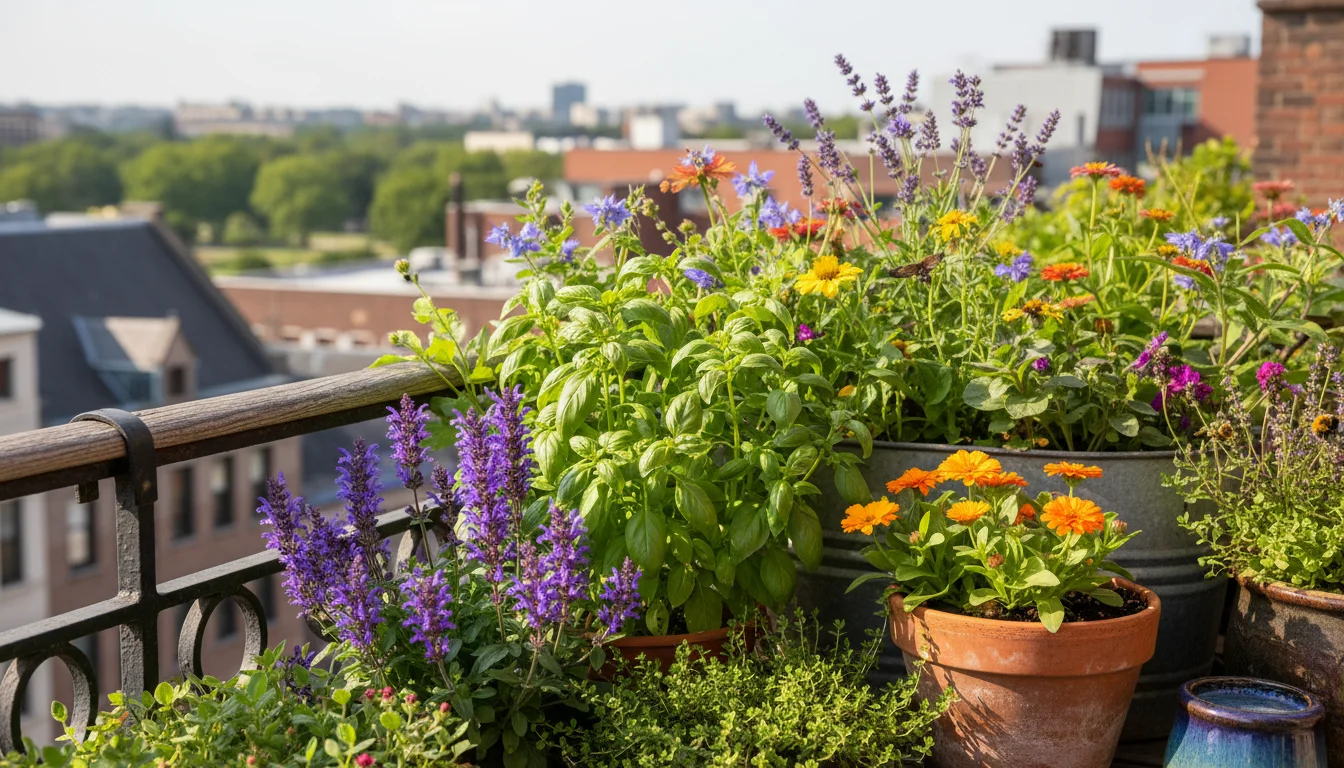
Key Considerations for Small Spaces:
- Size and Growth Habit: Choose compact varieties or plants suitable for containers. Look for labels indicating “dwarf,” “patio,” or “container friendly.” Herbs like basil and thyme are excellent choices, remaining manageable in pots.
- Sunlight Requirements: Match plants to your balcony’s sun exposure. Most flowering pollinator plants require at least 6 hours of direct sun daily.
- Bloom Period: Aim for continuous blooms from early spring to late fall. This ensures a consistent food source for pollinators throughout their active seasons.
- Flower Diversity: Offer a variety of flower shapes and sizes to accommodate different pollinator mouthparts. Tubular flowers suit butterflies and hummingbirds, while flat, open flowers appeal to bees and hoverflies.
- Nectar and Pollen Richness: Opt for single-petal flowers over highly hybridized, “double” varieties. Double flowers often have less nectar or pollen, or their structures make it difficult for pollinators to access resources.
- Host Plants: Include plants that serve as food for caterpillar larvae. For example, parsley, dill, and fennel host Black Swallowtail caterpillars, while milkweed (Asclepias species, ensure it is native to your region) is essential for Monarch butterflies.
Below, find a table featuring excellent pollinator plants suitable for small spaces, highlighting their benefits and specific pollinator attractions. You can adjust this list based on your specific climate zone and local native plant recommendations.
| Plant Name | Pollinator Attraction | Bloom Season | Container Suitability | Sun Exposure |
|---|---|---|---|---|
| Lavender (Lavandula angustifolia) | Bees, Butterflies | Summer | Excellent (needs good drainage) | Full Sun |
| Purple Coneflower (Echinacea purpurea) | Bees, Butterflies, Goldfinches | Summer, Fall | Good (select compact varieties) | Full Sun |
| Salvia (e.g., Salvia nemorosa ‘Caradonna’) | Bees, Hummingbirds | Late Spring, Summer, Fall | Excellent | Full Sun |
| Pentas (Pentas lanceolata) | Butterflies, Hummingbirds | Summer, Fall | Excellent | Full Sun |
| Marigold (Tagetes spp.) | Bees, Ladybugs | Summer, Fall | Excellent | Full Sun |
| Nasturtium (Tropaeolum majus) | Bees, Hoverflies | Spring, Summer, Fall | Excellent (edible leaves/flowers) | Full Sun, Partial Shade |
| Milkweed (Asclepias tuberosa – Butterfly Weed) | Monarch Butterflies (host plant), Bees | Summer | Good (needs deep pot, choose native species) | Full Sun |
| Sweet Alyssum (Lobularia maritima) | Small Bees, Hoverflies | Spring, Summer, Fall | Excellent (cascading habit) | Full Sun, Partial Shade |
| Zinnia (Zinnia elegans ‘Profusion’ series) | Butterflies, Bees | Summer, Fall | Excellent (dwarf varieties) | Full Sun |
| Cosmos (Cosmos bipinnatus ‘Sonata’ series) | Bees, Butterflies | Summer, Fall | Good (dwarf varieties) | Full Sun |
Remember to group plants with similar sun and water requirements together in containers. This simplifies care and creates a more aesthetically pleasing arrangement. You maximize your pollinator attraction and improve your gardening efficiency when you plan your plant selections thoughtfully.
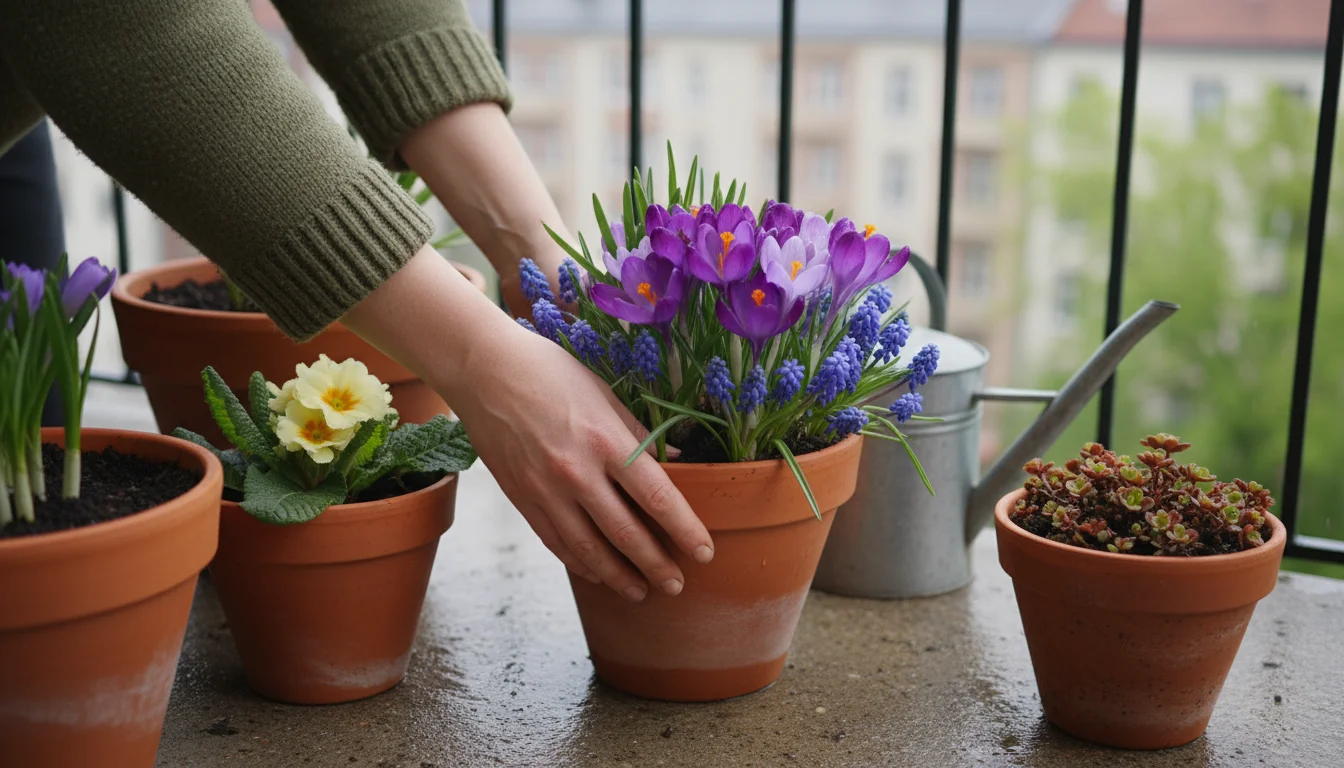
Creating a Year-Round Pollinator Haven
A truly effective pollinator garden provides resources throughout the growing season, not just during peak summer. You ensure continuous support for various pollinator species by carefully planning for successive blooms from early spring to late autumn. This continuous buffet is especially crucial for solitary bees and early emerging butterflies that need sustenance after winter dormancy, and for late-season migrants building up energy reserves.
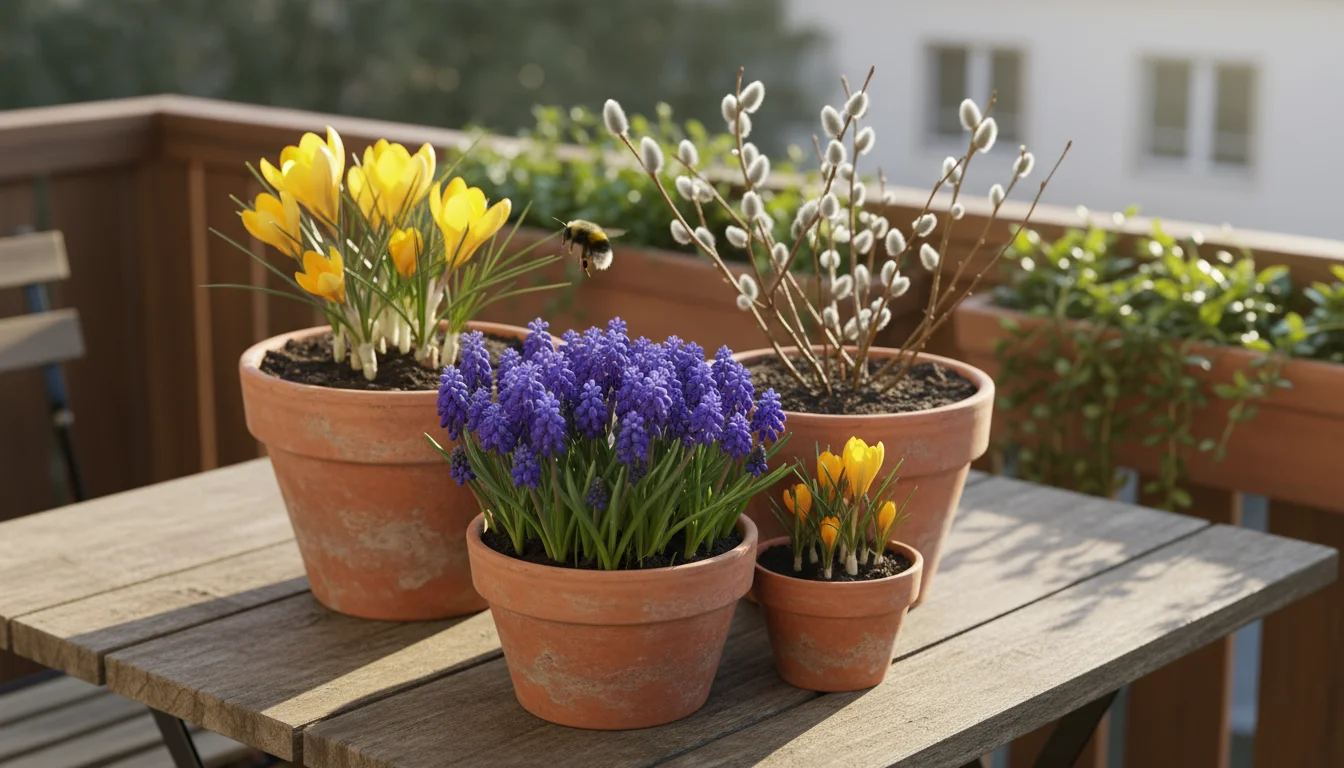
Strategies for Continuous Blooms:
- Early Spring Blooms: Plant crocuses, hyacinths, or grape hyacinths in pots during fall for early spring emergence. Potted pussy willow (Salix discolor) or small native flowering shrubs like native azaleas (Rhododendron spp.) can also provide critical early pollen. You offer a lifeline to hungry pollinators when you ensure these first flowers are available.
- Mid-Season Abundance: This is typically the easiest time to maintain blooms. Utilize the plants from the table above, such as Salvia, Coneflower, and Lavender. Rotate annuals to fill gaps as perennials finish their first flush of flowers. You sustain robust pollinator activity by providing a wealth of choices during these months.
- Late Summer and Fall Sustenance: As many plants fade, pollinators require late-season nectar and pollen to prepare for winter or migration. Asters, Goldenrod (choose native, non-invasive species), Sedum ‘Autumn Joy’, and late-blooming Salvias are excellent choices. Mums and pansies can also provide some nectar. You ensure vital energy reserves for overwintering or migrating species when you prioritize these late bloomers.
- Overwintering Habitats: Do not be too tidy in the fall. Leave some spent plant stalks and leaf litter in your containers or around your patio. Many native bees and beneficial insects overwinter in hollow stems or under debris. You offer critical shelter when you leave these natural materials in place. Consider a small “bee hotel” specifically designed for solitary native bees, which you can purchase or construct yourself.
To implement this, create a simple calendar or chart mapping out bloom times for your chosen plants. Adjust your planting schedule to ensure minimal gaps. For instance, if your early spring bulbs finish in May, plan for a succession of plants like catmint (Nepeta x faassenii) and penstemon to begin flowering shortly thereafter. You maintain a dynamic and productive ecosystem throughout the year by thinking seasonally.
Beyond flowers, provide a shallow water source. A saucer filled with pebbles and water, offering a safe landing spot, gives pollinators a place to drink without drowning. You meet a fundamental need for survival when you offer this small amenity. Just ensure you clean and refill it regularly to prevent mosquito breeding. Your mindful attention to these details significantly enhances your small space as a pollinator haven.
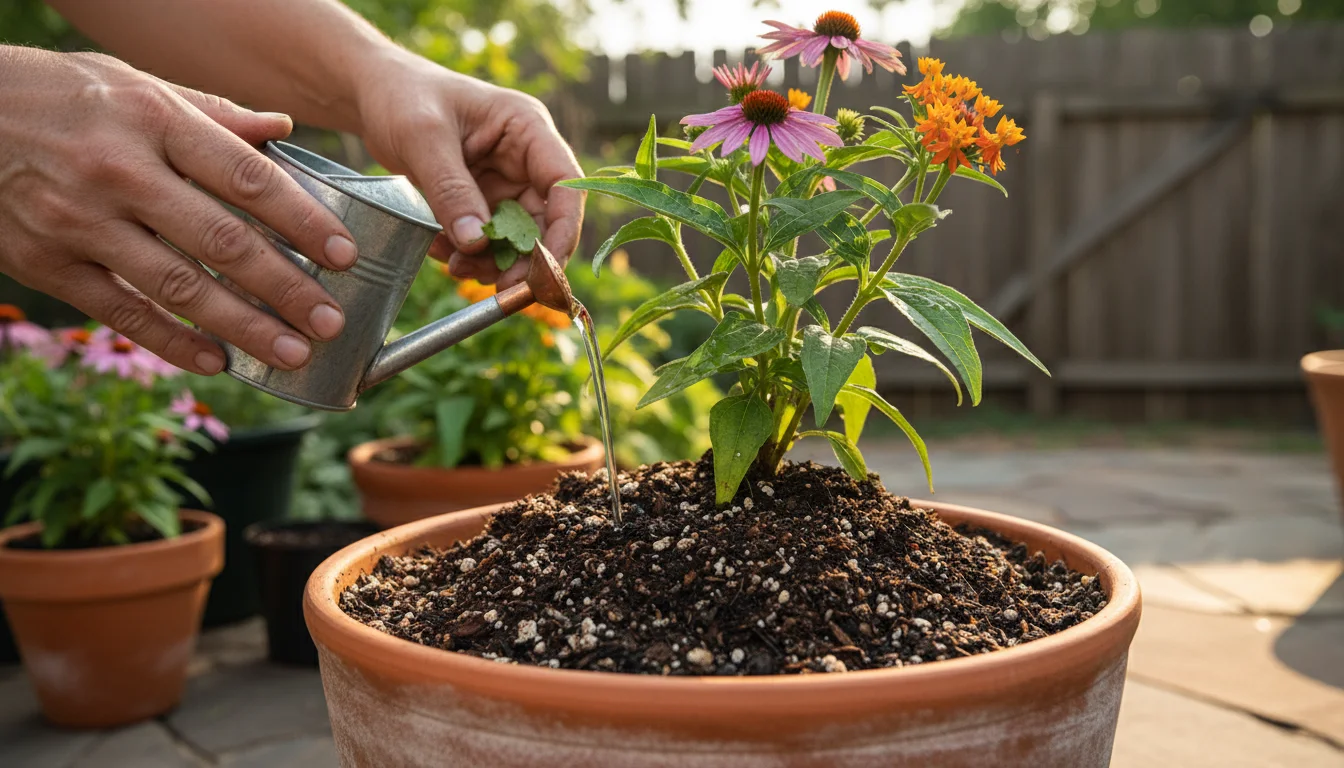
Sustainable Soil and Watering Practices for Pollinator Gardens
A healthy garden begins with healthy soil, even in containers. Choosing sustainable potting mixes and employing water-wise irrigation strategies are fundamental to supporting your pollinator plants and minimizing your environmental footprint. You create the best foundation for thriving plants and a vibrant pollinator ecosystem when you adopt these practices.
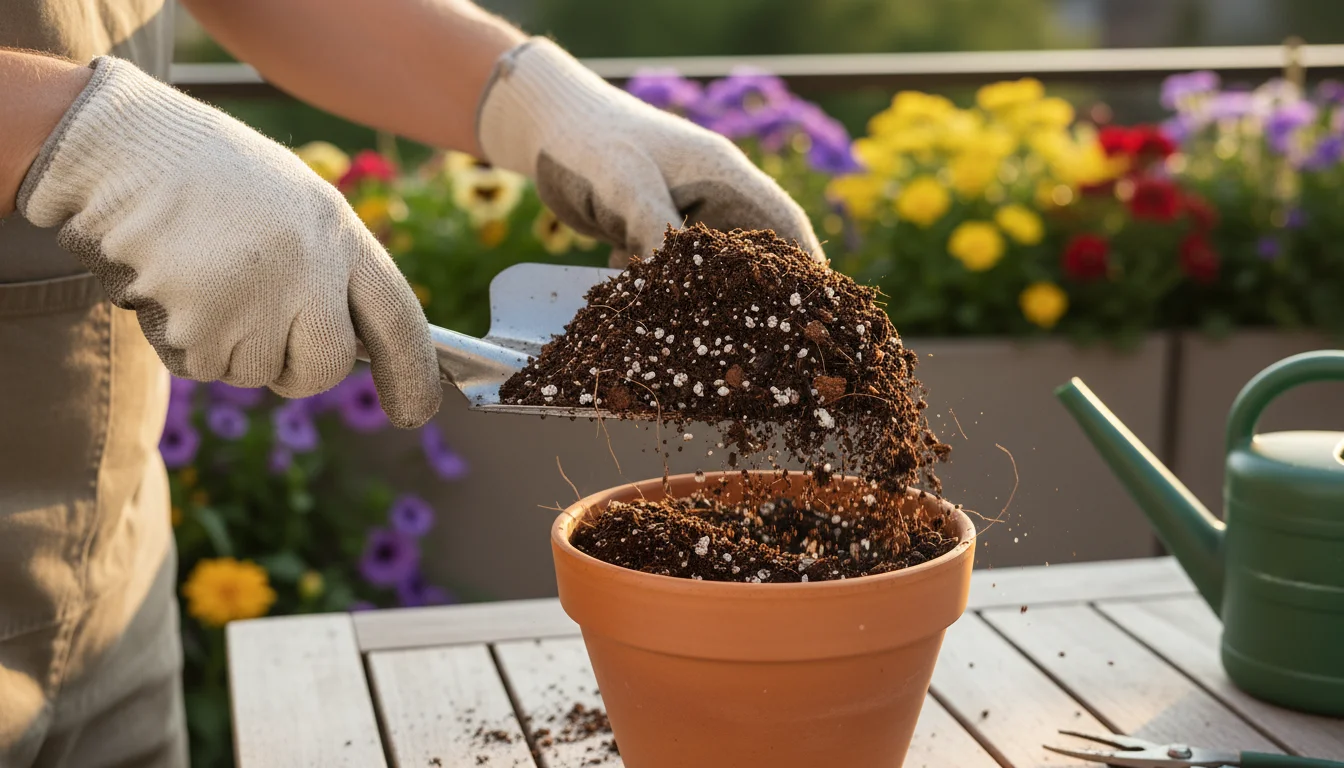
Peat-Free Potting Mixes:
Traditional potting mixes often contain peat moss, harvested from peatlands, which are vital carbon sinks and delicate ecosystems. Peat extraction releases stored carbon dioxide, contributing to climate change. You make an environmentally responsible choice when you opt for peat-free alternatives. These mixes are readily available and perform just as well, if not better, than peat-based options.
- Ingredients: Peat-free mixes typically contain a blend of coir (coconut fiber), compost, pine bark fines, perlite, and sometimes vermiculite.
- Benefits: They offer excellent drainage and aeration, retain moisture efficiently, and often incorporate beneficial microbes. Coir, in particular, rehydrates easily and can be a renewable resource.
- Refreshing and Reusing: Do not discard old potting mix. You can refresh and reuse it for subsequent plantings. Sift out old roots, then mix in fresh compost, a handful of worm castings, and some perlite or coir to restore its structure and nutrient content. This reduces waste and saves you money.
You can also create your own peat-free mix. A common recipe involves combining two parts high-quality compost, one part coir, and one part perlite or coarse sand. This allows you to control the ingredients and ensure sustainability.
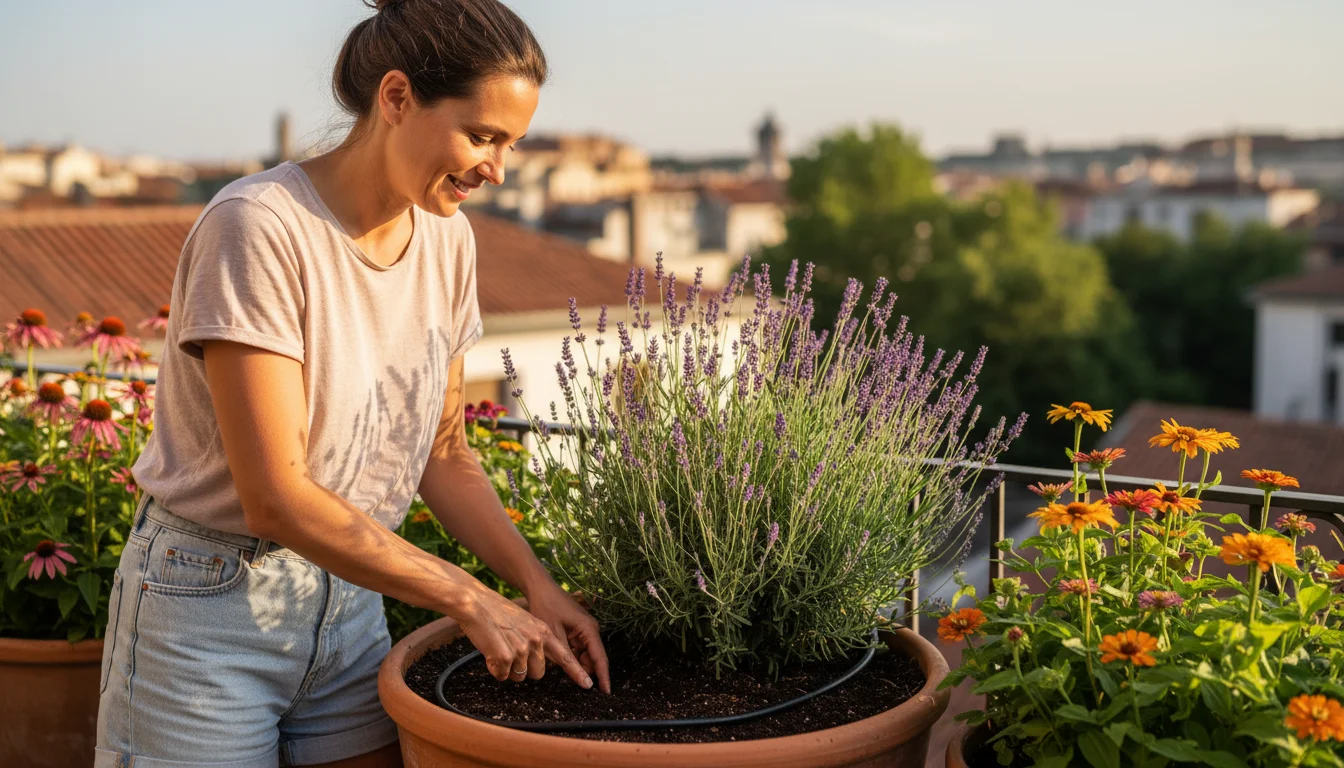
Water-Wise Irrigation:
Water is a precious resource, and efficient watering practices are crucial, especially in container gardening where evaporation can be high. You reduce waste and ensure your plants receive optimal hydration by adopting smart watering habits.
- Deep Watering Rhythm: Water deeply and less frequently rather than shallowly and often. This encourages plant roots to grow deeper, making them more resilient. Check soil moisture by sticking your finger about an inch or two into the soil. Water only when it feels dry.
- Drip Lines or Self-Watering Planters: For multiple containers, consider a simple drip irrigation system. These deliver water directly to the plant’s root zone, minimizing evaporation. Self-watering planters with a reservoir also significantly reduce watering frequency and waste. You conserve water effectively when you use these systems.
- Mulch for Containers: Apply a layer of mulch (shredded leaves, pine bark, or straw) to the surface of your container soil. Mulch reduces water evaporation, keeps soil temperatures more stable, and suppresses weeds. You retain moisture and protect your plants when you apply mulch.
- Rain Capture Basics: For balconies and patios, you might not have space for a large rain barrel, but smaller solutions exist. Place small buckets or containers in areas where they can collect rainwater. This “free” water is perfect for your plants, as it lacks the chlorine found in tap water. You harness natural resources when you collect rainwater. Always check local regulations regarding rain capture before you install any system.
- Consider Greywater: Greywater refers to lightly used water from sinks, showers, or laundry (excluding water from toilets or contaminated sources). In some areas, with proper filtration and local permits, you can repurpose this water for non-edible ornamental plants. Always check local guidelines, as rules vary widely. You reduce your overall water consumption significantly when you explore safe greywater use.
By implementing these sustainable soil and watering practices, you not only support the health of your pollinator plants but also act as a steward of environmental resources. You demonstrate that small-space gardening can be highly impactful for both local ecosystems and broader sustainability goals.
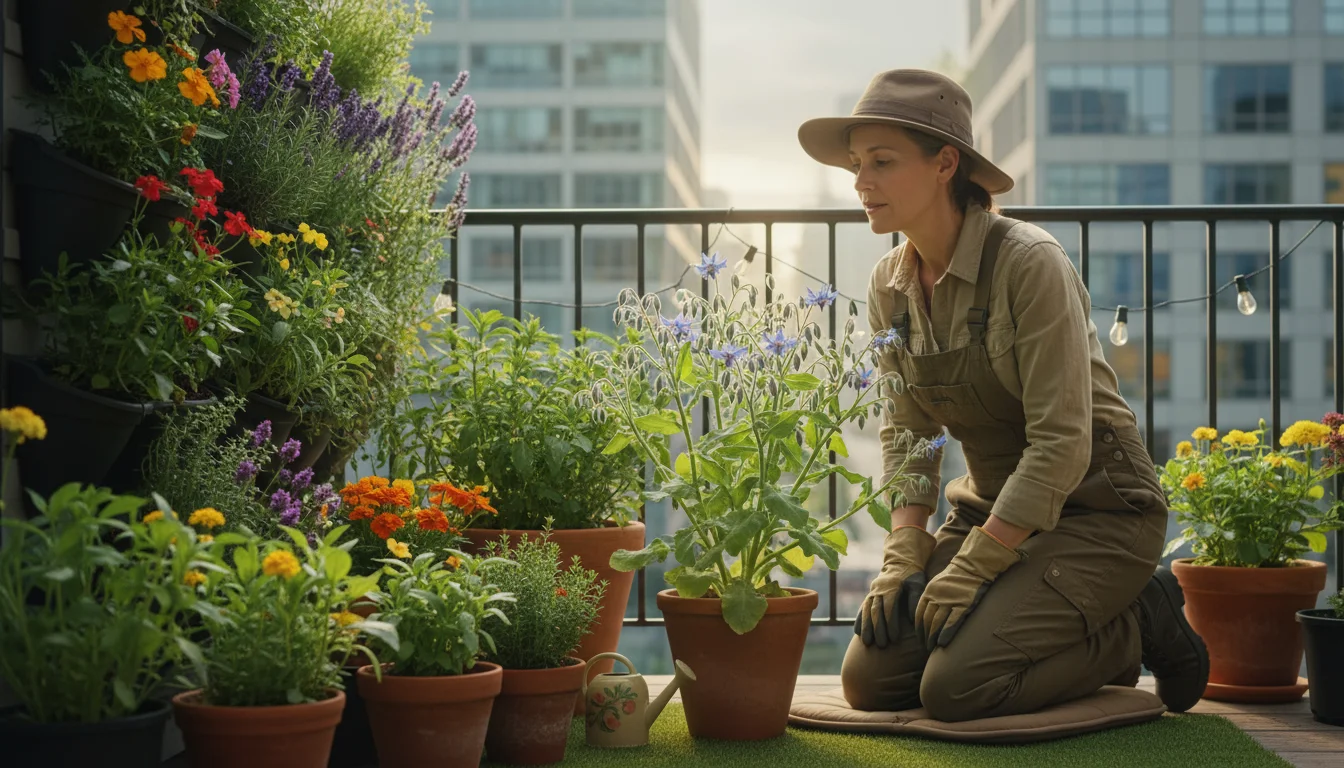
Protecting Pollinators: Safe Pest Management and Climate Resilience
Ensuring the safety of pollinators in your garden means adopting practices that control pests without harming beneficial insects. Integrated Pest Management (IPM) offers a comprehensive, environmentally sensitive approach. You also need to consider how to protect your plants and their visitors from increasingly unpredictable weather patterns due to climate change.
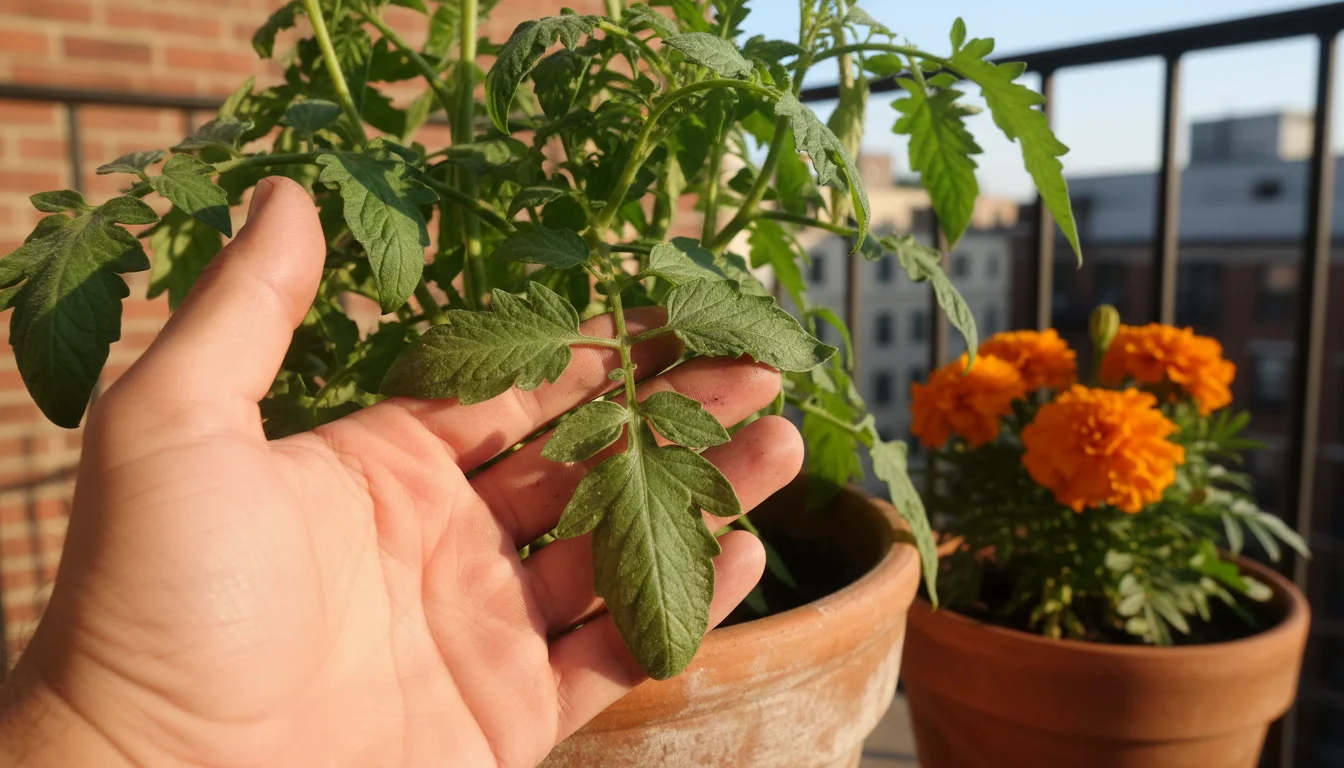
Integrated Pest Management (IPM):
IPM focuses on prevention, monitoring, and using the least-toxic control methods only when necessary. You safeguard pollinators when you prioritize these non-chemical strategies.
- Prevention:
- Choose Healthy Plants: Strong, healthy plants resist pests better. Ensure proper watering, light, and nutrients.
- Companion Planting: Some plants deter pests naturally. Marigolds can repel nematodes, while nasturtiums can act as a trap crop for aphids. You create a natural defense system when you integrate these plants.
- Good Air Circulation: Space containers appropriately to allow air to flow, reducing fungal diseases.
- Monitoring:
- Regular Inspections: Regularly inspect your plants for signs of pests or disease. Early detection makes control easier. Check the undersides of leaves, stems, and new growth.
- Identify Pests: Learn to identify common pests and, crucially, beneficial insects like ladybugs, lacewings, and hoverflies. You avoid harming allies when you know who is who.
- Mechanical Controls:
- Hand-Picking: For larger pests like slugs or caterpillars (if not beneficial host plant larvae), hand-pick them off plants.
- Water Blasts: A strong spray of water dislodges aphids and spider mites from leaves. You can effectively remove many soft-bodied pests this way.
- Pruning: Remove heavily infested leaves or branches to prevent spread.
- Least-Toxic Options (Last Resort):
- Insecticidal Soap: This non-toxic spray kills soft-bodied insects on contact. Apply it in the evening when pollinators are less active.
- Neem Oil: A natural plant-derived insecticide and fungicide. Apply carefully and according to directions, again, preferably in the evening to minimize pollinator exposure.
- Avoid Systemic Pesticides: These chemicals are absorbed by the plant and can be present in nectar and pollen, directly harming pollinators for extended periods. You protect bees and butterflies by completely avoiding these products.
Always read product labels thoroughly, even for “organic” or “natural” pesticides, and understand their impact on beneficial insects. Your careful application minimizes risk to non-target species.
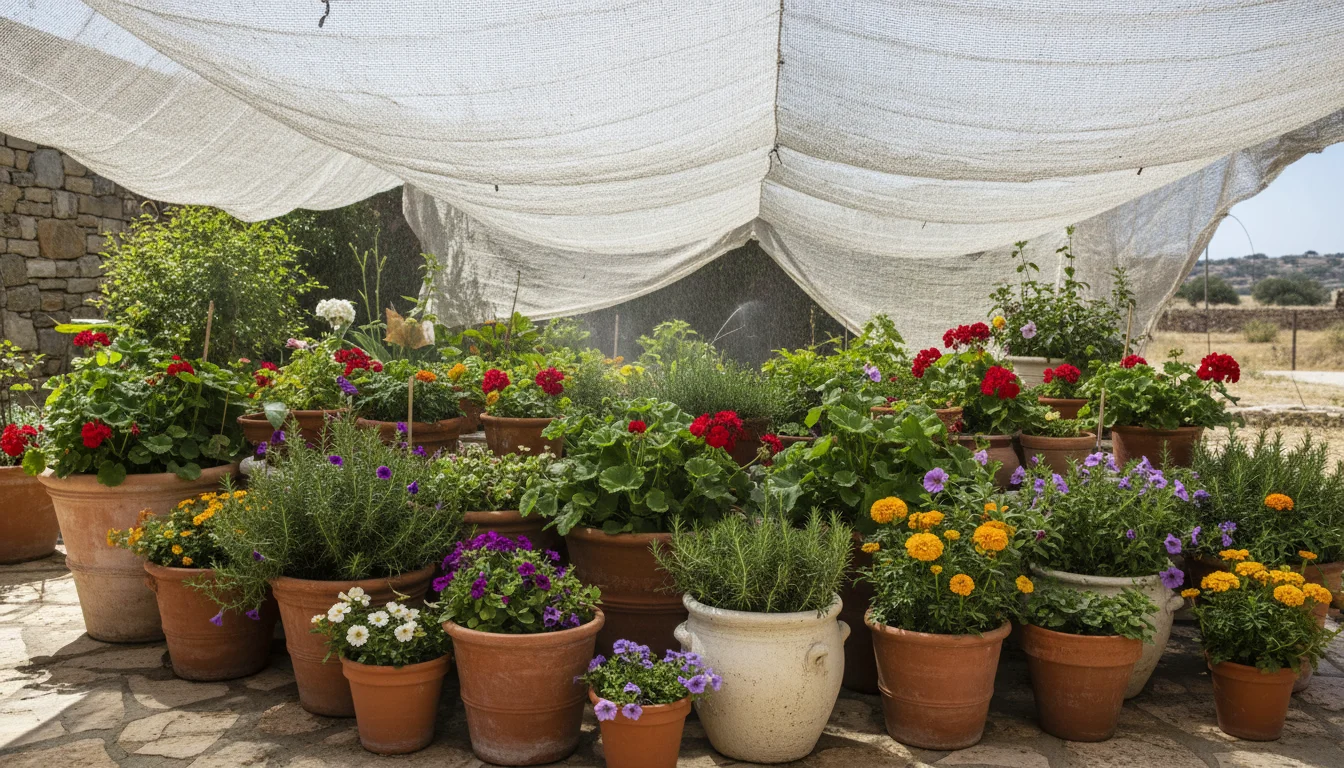
Small-Space Climate Resilience:
Balconies and patios face unique challenges from extreme weather. You can protect your pollinator plants from heat, wind, and frost with proactive strategies.
- Heat Strategies:
- Shade Cloth: During intense heatwaves, rig up a temporary shade cloth or move sensitive plants to a shadier spot. You prevent scorching and reduce water stress.
- Clustering Containers: Grouping pots together creates a microclimate with higher humidity and slightly lower temperatures, protecting roots from direct sun.
- Light-Colored Pots: Dark-colored pots absorb more heat. Consider lighter-colored containers or paint existing ones to reflect heat.
- Wind Strategies:
- Staking: Stake taller plants to prevent them from breaking in strong winds.
- Windbreaks: Utilize furniture, trellises, or strategically placed larger, sturdier plants as windbreaks. You protect delicate flowers and stems from damage.
- Heavier Containers: Use heavier pots or add weights to prevent lightweight containers from blowing over.
- Frost Strategies:
- Insulation: Wrap containers with burlap or bubble wrap to insulate roots during unexpected cold snaps. You protect roots from freezing.
- Move Indoors: For tender perennials and annuals, move them indoors or into a sheltered area (garage, shed) when frost is predicted.
- Water Before Frost: Well-hydrated soil retains heat better than dry soil. Water plants thoroughly the day before a frost is expected.
You ensure the longevity of your pollinator plants and provide consistent resources for bees and butterflies when you anticipate and prepare for these environmental challenges. Your mindful approach creates a resilient and welcoming habitat.
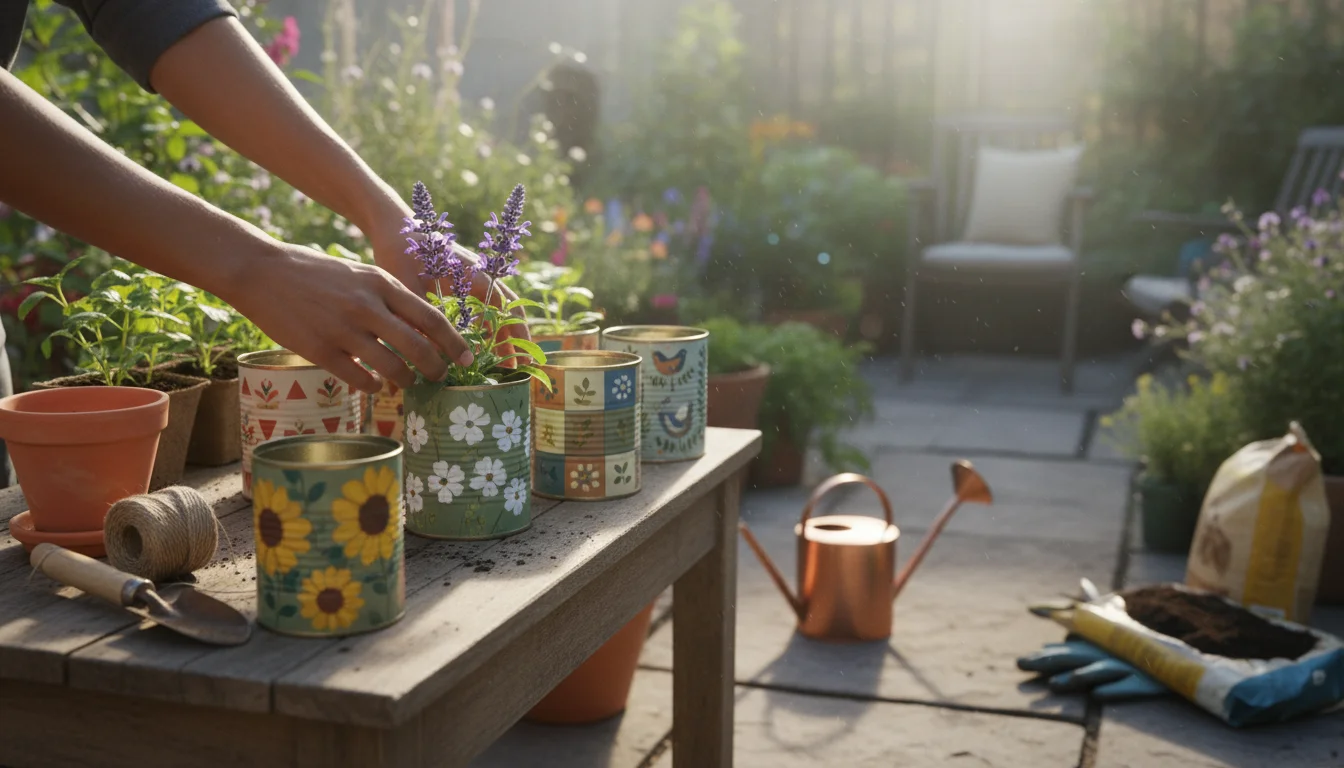
Container Choices and Upcycling for Your Pollinator Garden
The containers you choose for your small-space pollinator garden impact plant health, aesthetics, and sustainability. You have numerous options, ranging from traditional terracotta to repurposed items, allowing you to express your style while making environmentally conscious decisions.
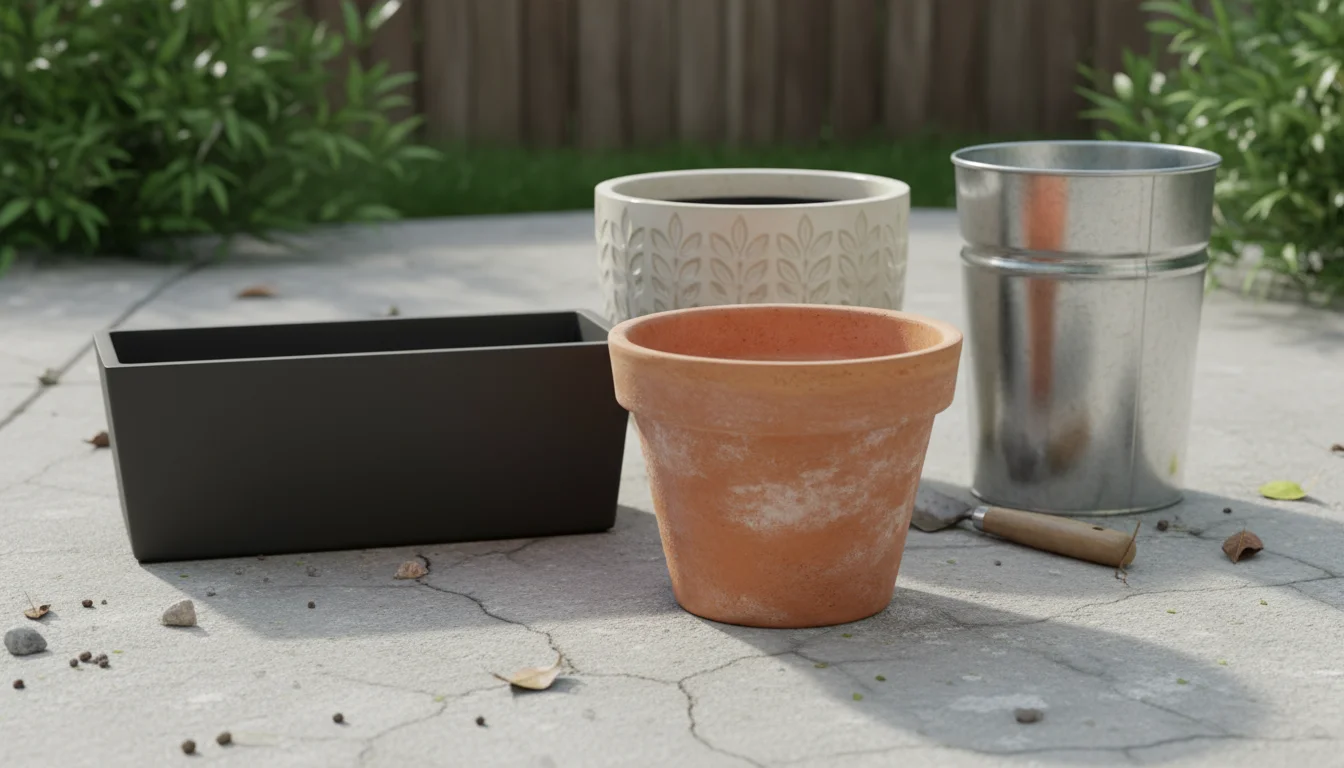
Selecting New Containers:
- Material Matters:
- Terracotta/Ceramic: These porous materials promote good airflow but dry out quickly. They are excellent for plants that prefer well-drained soil, like many Mediterranean herbs.
- Plastic: Lightweight and retain moisture well, making them suitable for water-loving plants. Choose recycled plastic options to reduce your environmental footprint.
- Wood: Attractive and insulating, but can rot over time. Opt for sustainably sourced FSC (Forest Stewardship Council) certified wood to ensure responsible forestry practices.
- Metal: Can absorb and transfer heat, potentially stressing roots in full sun. Use lighter colors or line them with insulation.
- Size and Depth: Always choose containers large enough to accommodate mature plant roots. Shallow pots stunt growth, leading to less vigorous plants and fewer blooms for pollinators. Deeper pots also provide better insulation against temperature fluctuations.
- Drainage: Essential for all containers. Ensure pots have adequate drainage holes to prevent waterlogging, which can lead to root rot. You prevent common plant diseases when you ensure proper drainage.
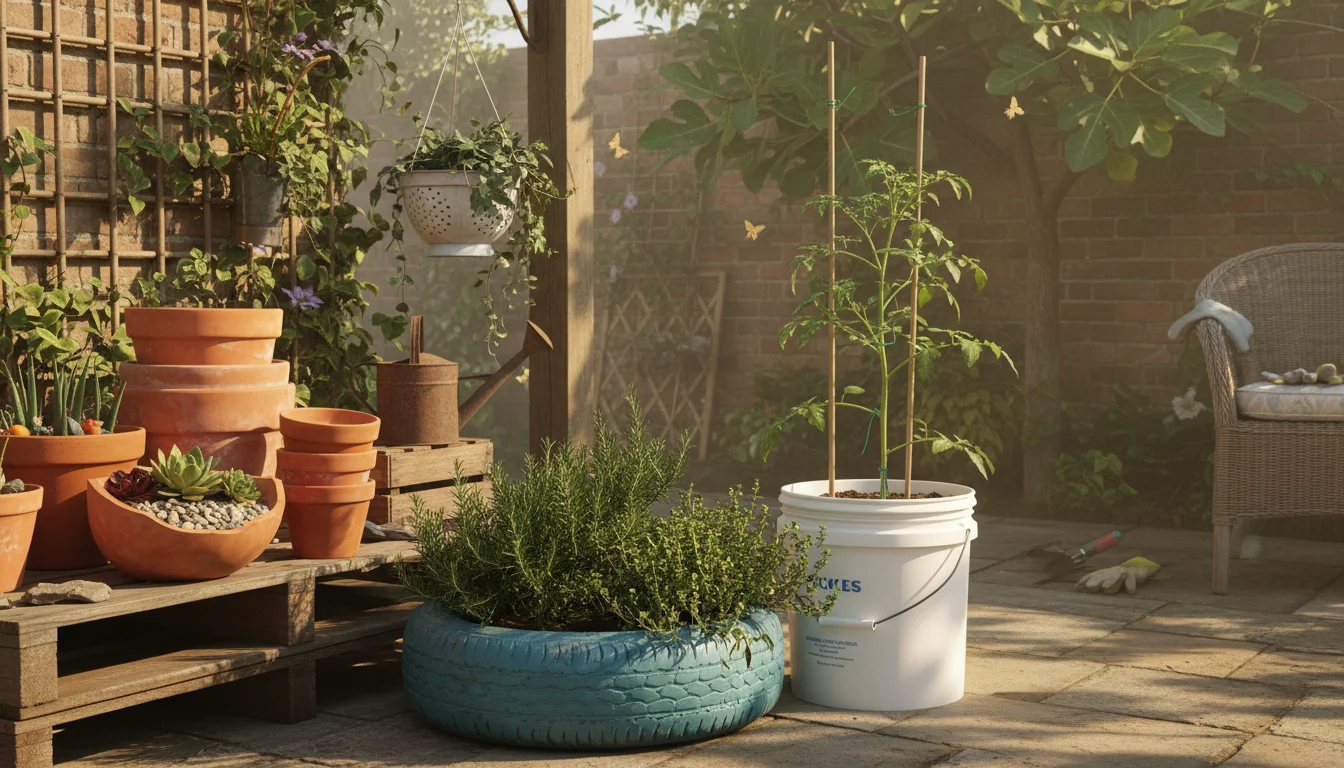
Upcycling and Reuse:
Embrace the principles of reduce, reuse, recycle by turning everyday items into unique planters. You reduce waste and add a personal touch to your small space. Always ensure your repurposed containers have drainage holes, which you can easily drill into many materials.
- Food-Grade Buckets: Old five-gallon food buckets (e.g., from restaurants or bakeries) make excellent, sturdy planters.
- Laundry Baskets: Line with burlap or landscaping fabric and fill with soil for a lightweight, breathable option.
- Old Tires: While they hold heat, painted tires can create unique, robust planters, especially for larger plants or herbs.
- Tin Cans: Smaller cans are perfect for herbs or small annuals. Ensure you drill drainage holes and consider painting them to prevent rust.
- Worn-Out Totes or Bags: Fabric grow bags are also a form of upcycling if made from recycled materials, offering good aeration and drainage.
When using repurposed materials, verify they are clean and free of harmful chemicals. Avoid containers that held strong cleaning agents or non-food industrial products. You protect your plants and yourself by ensuring material safety.
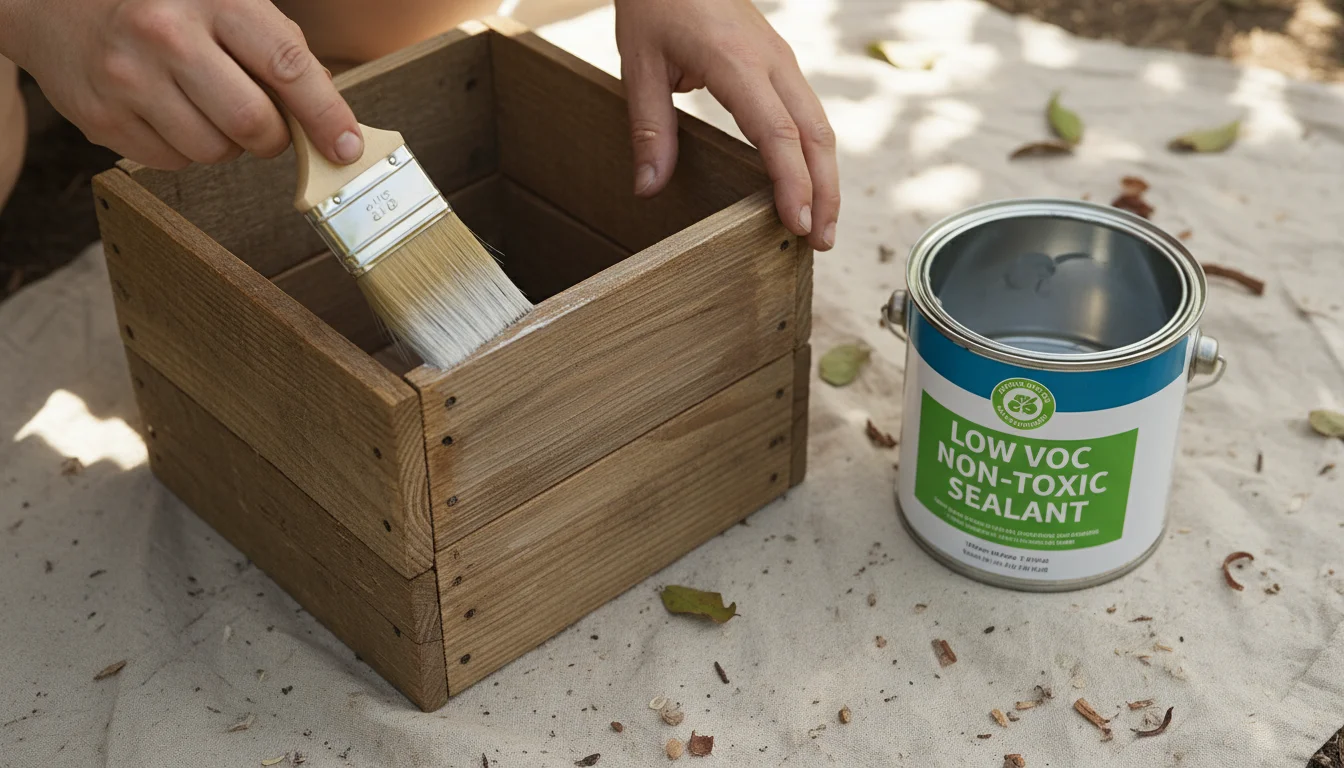
Non-Toxic Finishes:
If you choose to paint or treat wooden containers, select non-toxic, eco-friendly finishes. Look for paints and sealants labeled “low VOC” (Volatile Organic Compounds) or “non-toxic.” You protect the environment and avoid introducing harmful chemicals into your garden ecosystem when you use these safer products. These finishes are crucial for any part of your garden where you might grow edibles or where pollinators will frequently land.
By thoughtfully choosing your containers and embracing upcycling, you create a sustainable and visually appealing environment for your pollinator plants. Your choices contribute to both the health of your garden and the planet.
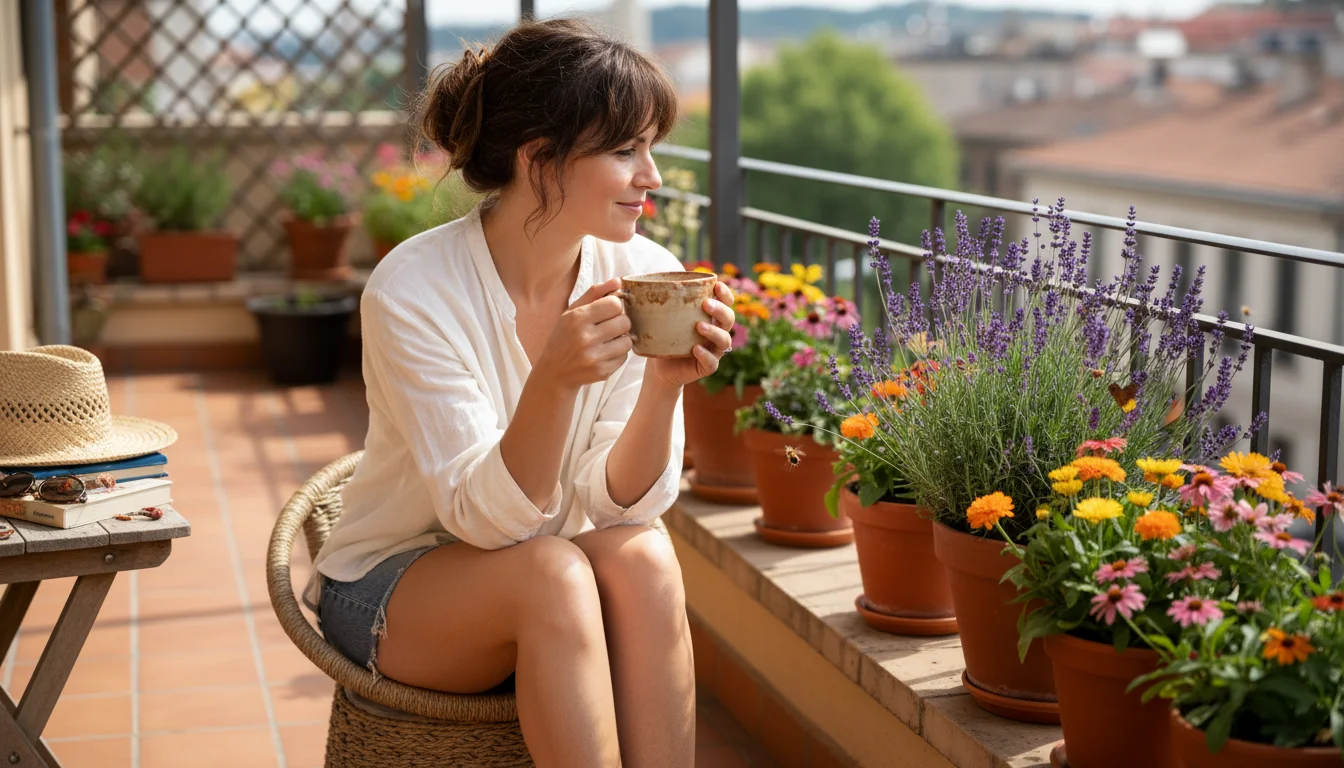
Frequently Asked Questions
Q: How can I attract more butterflies to my balcony?
A: To attract more butterflies, focus on providing both nectar sources for adults and host plants for their caterpillars. Plant a variety of colorful, single-petal flowers like zinnias, cosmos, and milkweed (if native to your area). Provide a shallow water source with pebbles or sand for butterflies to drink from, and ensure your garden is pesticide-free. Butterflies also appreciate sunny, sheltered spots to bask.
Q: Are store-bought plants safe for pollinators?
A: Not always. Many nursery plants are treated with systemic pesticides, particularly neonicotinoids, which are highly toxic to bees and other pollinators. Always ask your nursery if plants have been treated with systemic insecticides. Prioritize plants from nurseries that explicitly label their offerings as “neonicotinoid-free” or “pollinator-friendly.” You ensure safety for your garden’s visitors when you actively inquire about plant treatments.
Q: What if I have limited sun on my balcony?
A: Even shady balconies can support pollinators. Choose shade-tolerant plants like native impatiens (Impatiens capensis), bleeding hearts (Dicentra spectabilis), or various ferns and hostas that offer shelter and microclimates. Some herbs like mint and lemon balm can tolerate partial shade and still provide nectar. You can create a beneficial environment for different types of pollinators, including certain moths and beetles, even with less direct sunlight.
Q: How do I handle small pest infestations without chemicals?
A: For small pest infestations, start with mechanical controls. Hand-pick larger pests or use a strong spray of water to dislodge aphids from leaves. Introduce beneficial insects like ladybugs (available from garden suppliers) if the infestation persists. As a last resort, use insecticidal soap or neem oil, applying them in the evening when pollinators are less active, and always follow package directions carefully. You protect beneficial insects and pollinators when you opt for non-chemical methods first.
Q: Can I grow vegetables and pollinator plants together?
A: Absolutely! Many vegetables rely on pollinators for fruit production. Growing pollinator plants alongside your vegetables benefits both. For example, borage attracts bees to pollinate tomatoes, while dill and fennel attract beneficial predatory insects that control vegetable pests. You create a more productive and resilient garden when you integrate these plant types.
For research-based sustainable gardening guidance, see
USDA NRCS Soil Health,
Royal Horticultural Society (RHS) Gardening Sustainably,
University of Minnesota Extension Composting,
Cornell Waste Management Institute Composting,
Xerces Society for Invertebrate Conservation, and
National Wildlife Federation Native Plants.
Disclaimer: This article is for informational purposes only and is not a substitute for professional advice. Check local regulations before installing rain capture, using greywater, or composting food scraps outdoors.
